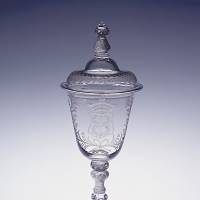"Edo Kaleidoscope" presents a collection of imported luxury goods from the Edo Period (1603-1867), ranging from Indian chintz to Dutch porcelain. Such goods were exotic to the Japanese and largely imported via Nagasaki by the Dutch East Indian Company. To the aristocracy who could afford them, the goods provided a kaleidoscopic view of what life was like on the other side of the world.
Indian sarasa chintz was widely adopted in Japan for making kimono, curtains for mirrors and for tea-ceremony items. It was also used to decorate kaleidoscopes, which were also introduced during the Edo Period, and so they became known as chintzy glasses or sarasa glasses. Other imports that survived the test of time include bidoro glass, taken from the Portuguese word "vidro" and Oranda (the Japanese pronunciation of "Holland"), a Japanese label of Dutch porcelain; March 15-June 8.
Miho Museum; 300 Tashiro Momodani, Shigaraki-cho, Koka, Shiga. Ishiyama Stn. 10 a.m.-5 p.m. ¥1,100. Closed Mon. 0748-82-3411; www.miho.jp



















With your current subscription plan you can comment on stories. However, before writing your first comment, please create a display name in the Profile section of your subscriber account page.